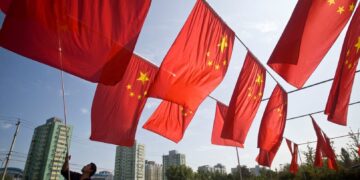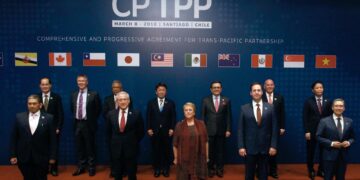By: Chen Youjun
Early in his presidency, Trump signed a presidential memorandum announcing America’s withdrawal from the Trans Pacific Partnership (TPP). But TPP survived the setback, and people are still referring to it as an embodiment of what is to come in global trade and investment development.
First, Trump’s dismissal of TPP carried significant anti-Obama symbolism, but TPP itself had considerable popular support. While TPP was largely devised and fostered during the Obama presidency, it was not the brainchild of the Obama administration alone. More accurately, it represents the vision and expectations for the future rules of global trade and investment, and is a modern interpretation of the global free trade concept. From this perspective, the influence of the TPP and the fallout from the US withdrawal will continue to reverberate. Admittedly, TPP cannot hide the divided views in American society regarding global trade and investment rules, and different interest groups, such as tobacco, agriculture, finance and insurance (or Wall Street) find TPP in its current form inadequate. This division may helped Trump justify his decision to withdraw from TPP.
While the Trump administration has announced its withdrawal from TPP in favor of bilateral economic cooperation and negotiation to protect US interests, it does not necessarily mean the US has given up its dominance in global trade rule-making. To the contrary, the Trump administration only made a technical retreat to set the stage for broad strategic gains.
Trade has been front and center of the Trump economic and trade agenda. In the US government, trade involves primarily the Commerce Department, USTR and ITC, etc., with the energy and environmental agencies playing a marginal role. In order to strengthen presidential oversight of trade issues, Trump announced the establishment of the National Trade Council, through which the White House could also wield direct ideological influence on trade policy-making.
Second, other TPP signatories, including Japan, Australia, New Zealand, and Canada, are not willing to let the deal fall by the wayside, but instead are planning a TPP without the US. Japan, for example, has invested heavily in TPP which has motivated its reluctance to drop the deal. Some voices in Japan are arguing that even though the US is leaving TPP, Japan should pursue it own high-standard multilateral trade and investment cooperation framework. What’s more, Japan wants to replicate some of the TPP provisions in the RCEP and the China-Japan-ROK economic cooperation framework, which may complicate efforts on these fronts. An FTA between Japan and the US may be a viable option. But even in that scenario, Japan may be wary of demands to further open up its agriculture market beyond the TPP standards.
This article was originally published on China-US Focus on March 20, 2017
About the author: Chen Youjun is a research fellow at the Institute of World Economy, Shanghai Institutes for International Studies.






























